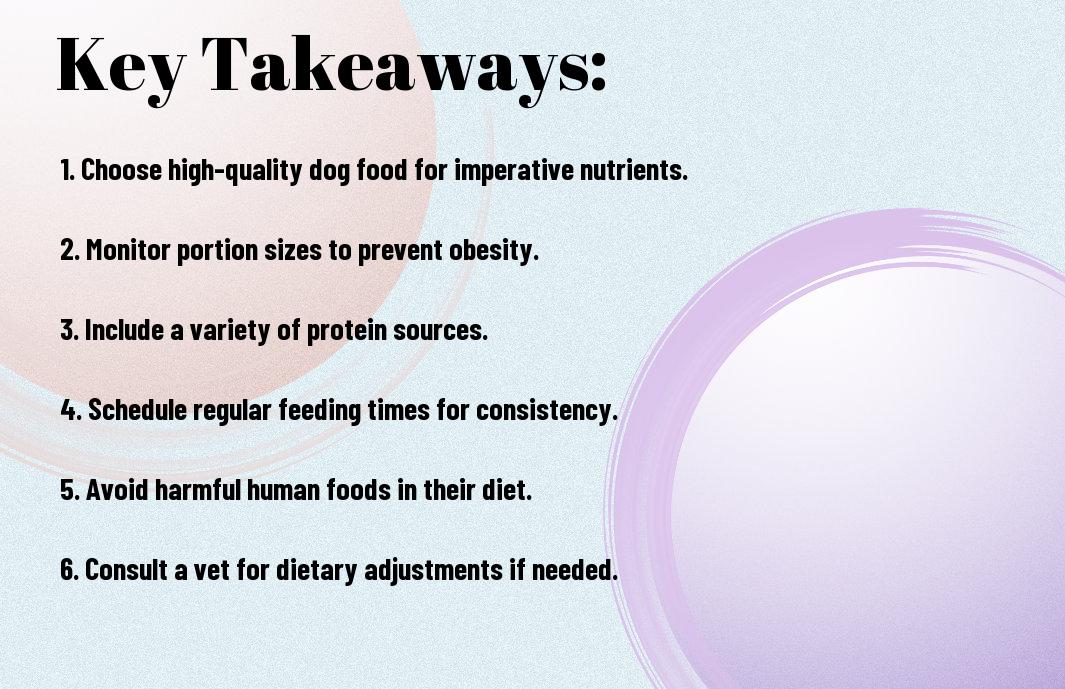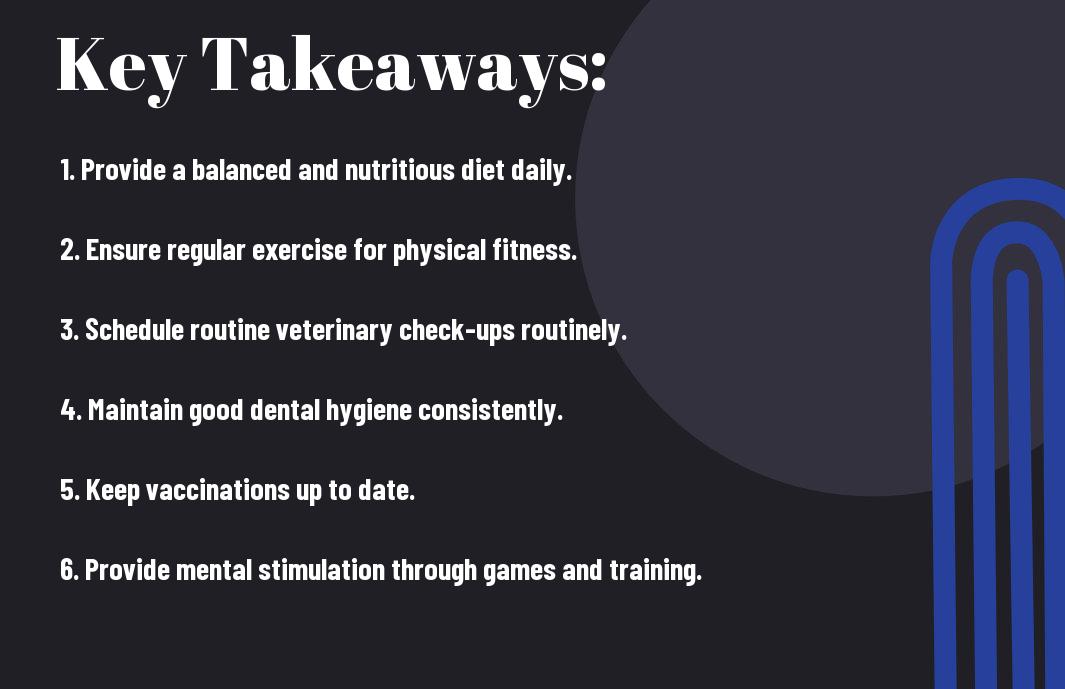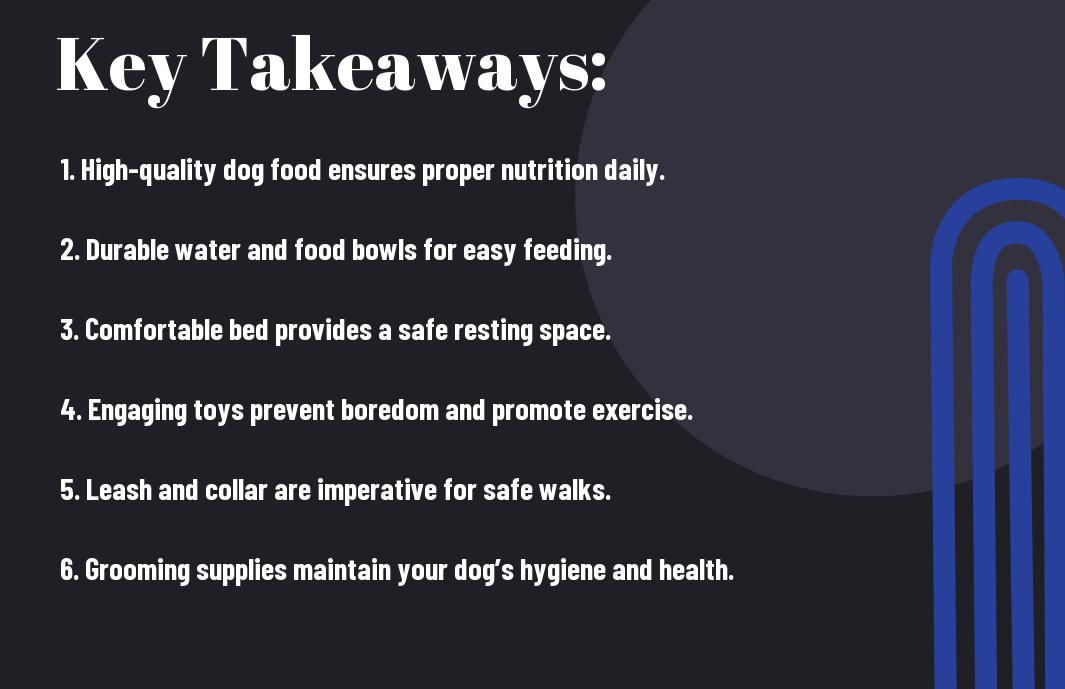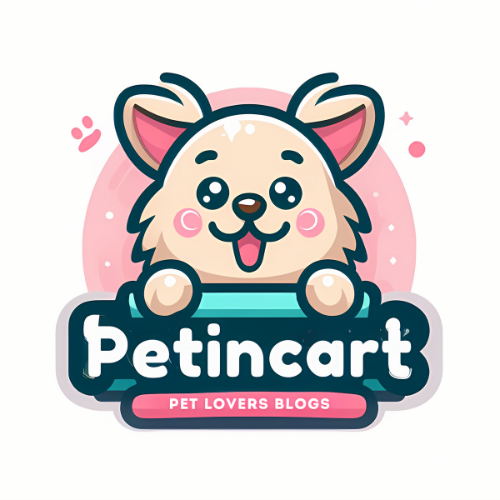Health plays a vital role in your dog’s overall well-being, and managing their diet is a key factor in achieving optimal health. By understanding your dog’s nutritional needs, you can tailor their meals to support their energy levels, weight management, and long-term health. In this blog post, you will discover tips and strategies to create a balanced diet that keeps your furry friend happy and thriving, ensuring they lead a vibrant and healthy life.


Understanding Your Dog’s Nutritional Needs
As a responsible dog owner, you must understand your dog’s unique nutritional needs to help them thrive. Each dog is an individual, and factors such as age, size, breed, and activity level all influence their dietary requirements. By tailoring your dog’s diet to meet these needs, you can support their overall health, ensure they maintain a healthy weight, and enhance their quality of life.
Essential Nutrients for Dogs
Above all else, a well-balanced diet for your dog includes a variety of crucial nutrients. These include proteins, fats, carbohydrates, vitamins, and minerals, each playing its own vital role in maintaining health. Proteins are necessary for growth and repair, while fats provide energy and help in nutrient absorption. Carbohydrates serve as a quick energy source and the fibers in them support digestive health.
The Role of Protein in Your Dog’s Diet
Dogs require protein for numerous bodily functions, including muscle development, immune response, and hormone production. As a general guideline, high-quality protein sources such as meat, fish, and eggs should make up a significant portion of your dog’s diet, particularly for active breeds. By providing adequate protein, you help nourish your dog’s body and support their energy levels.
Plus, including a sufficient amount of protein in your dog’s diet is crucial for puppies, as they require more protein for growth compared to adult dogs. This crucial nutrient is also a key component in repairing any tissue damage, making it even more critical for active or injured dogs. Be mindful of the protein sources you select; opting for whole meat-based ingredients will offer a more complete amino acid profile for your dog.
Fats and Carbohydrates: Finding the Right Balance
Any balanced canine diet should contain a healthy amount of fats and carbohydrates, as both provide crucial energy and nutrients. Fats are crucial for supporting skin and coat health, while carbohydrates can offer energy and help maintain a healthy digestive system. The type and amount of these nutrients can vary based on your dog’s age and activity level, so it’s important to find the right balance for your furry friend.
Also, while fats are an important source of energy, they should be given in moderation to avoid unnecessary weight gain. Healthy fats, such as omega-3 and omega-6 fatty acids, contribute to your dog’s coat and skin health as well. In terms of carbohydrates, opt for high-quality sources such as whole grains, fruits, and vegetables that provide fiber and crucial nutrients without causing digestive upset.
Vitamins and Minerals: Micronutrient Importance
Dogs also require vitamins and minerals, often referred to as micronutrients, to support their overall health and well-being. These nutrients play roles in various bodily functions, including bone health, immune system function, and metabolism. A diet rich in a variety of foods like lean meats, whole grains, fruits, and vegetables can ensure your dog gets the vitamins and minerals they need.
Essentially, a diverse diet can help prevent deficiencies and support all aspects of your dog’s health. Supplements may be necessary in some cases but should only be used under the guidance of your veterinarian. By providing a nutrient-dense diet, you invest in your dog’s long-term health and vitality.

Selecting the Right Dog Food
Some pet owners may feel overwhelmed when it comes to choosing the right food for their dogs. With countless options available, understanding the types of dog food and how they meet your pet’s nutritional needs is important for their overall health and well-being. Let’s explore the different kinds of dog food available on the market today.
Types of Dog Food: Kibble, Wet, and Raw
Food choices for your dog typically fall into three main categories: kibble (dry), wet (canned), and raw diets. Each has its unique benefits and drawbacks that can cater to different preferences and health considerations. Kibble is often the most convenient and cost-effective choice, providing balanced nutrition while being easy to store and serve. Wet food usually contains a higher moisture content, which can be beneficial for dogs that need to increase their water intake or who are picky eaters. Raw diets, while gaining popularity, require thorough understanding and research to ensure they’re formulated properly for your dog’s needs.
| Kibble | Convenient, cost-effective, balanced nutrition |
| Wet Food | Higher moisture content, appealing taste, beneficial for hydration |
| Raw Diet | Natural ingredients, more closely resembles a dog’s ancestral diet |
| Homemade | Customizable ingredients, fresh food, requires research |
| Specialty Diets | Designed for specific health issues, high-quality ingredients |
This variety ensures that you have options to meet your dog’s individual needs, lifestyle, and any medical considerations.
Reading Food Labels: Understanding Ingredients
Types of dog food should make reading labels an integral part of your buying process. Looking closely at ingredients can help you assess the quality of the dog food you’re considering. You should prioritize foods that list high-quality proteins as the primary ingredients and avoid those with fillers or artificial additives. A knowledgeable pet owner pays attention to guaranteed analysis, as it indicates the nutritional breakdown of proteins, fats, fibers, and moisture content.
Even if a dog food package boasts appealing marketing, it’s important to identify the actual ingredients that promote your dog’s health. Look for recognizable items like whole meats, grains, vegetables, and fruits while steering clear of vague terms like “meat by-products” and certain fillers that may not offer nutritional value.
Life Stage Considerations: Puppies, Adults, and Seniors
Seniors, puppies, and adult dogs have different nutritional requirements reflecting their life stages. It’s important to choose food that’s suited for your pet’s age group. Puppies need more calories to fuel their growth, while adult dogs require balanced nutrition to maintain health. Senior dogs often need lower calorie options and additional supplements to support joint health and overall vitality.
Also, as your dog ages, their metabolism and energy levels may decrease, leading to potential weight gain if their diet isn’t appropriately adjusted. Keeping in mind these life stage considerations will help you make informed decisions regarding your dog’s diet throughout their life.
Special Dietary Needs: Allergies and Sensitivities
Behind the general nutritional needs, some dogs may have specific dietary requirements due to allergies or sensitivities. Identifying these issues is key to preventing discomfort or health complications. Always consult your veterinarian if you suspect your dog is experiencing food allergies, as they can guide you toward suitable diet options that avoid specific allergens while still providing balanced nutrition.
Stage changes in your dog’s health often reveal sensitivities that may necessitate dietary adjustments. Be proactive in seeking food options that cater to these special needs, ensuring optimal health and comfort for your furry companion.
Portion Control and Feeding Guidelines
After you decide on the type of food that best suits your dog’s needs, understanding proper portion control becomes vital for their health and well-being. Properly measured portions can help prevent obesity and manage your pet’s weight effectively. Knowing the right amount to feed your dog should be guided by their age, weight, activity level, and any specific health concerns. Regular consultation with your veterinarian can help you tailor a dietary plan that includes portion sizes suited to your dog’s individual requirements.
Determining the Right Portion Size
Along with understanding the nutritional needs of your dog, determining the right portion size is instrumental in promoting a healthy lifestyle for them. Most commercial dog foods provide feeding guidelines based on the dog’s weight and age. Always start by checking the packaging of your dog’s food for these recommendations. However, these are just starting points; you may need to adjust the portions based on how your dog responds to their current diet. Watching for signs of weight gain or loss can indicate whether you should increase or decrease their daily intake.
Meal Frequency: How Often Should You Feed Your Dog?
Above all, establishing a consistent feeding schedule is vital for your dog’s digestion and overall gastrointestinal health. Puppies often require more frequent meals, typically three to four times a day, while adult dogs can usually be fed twice a day. Senior dogs, especially those that may have health problems, might also need a slightly adjusted feeding routine. Consistency not only helps regulate their metabolism but also creates a sense of stability for your dog, making it easier for them to anticipate their next meal.
Feed your dog at regular intervals throughout the day to foster a healthy routine. Sticking to a consistent schedule helps to avoid overeating, digestion issues, and behavioral problems associated with hunger. By closely monitoring your dog’s weight and adjusting their feeding schedule as necessary, you will support their overall health.
Monitoring Your Dog’s Weight: Tools and Tips
Should you want to ensure your dog maintains a healthy weight, monitoring their weight regularly is important. Regular weigh-ins at home or during vet visits can help you spot any unwanted weight changes before they become problematic. Additionally, maintaining a body condition score (BCS) chart can act as a useful tool to evaluate whether your dog is underweight, at an ideal weight, or overweight. You can also look out for visual cues, such as their body shape and the visibility of their ribs, for a more hands-on approach.
- Schedule regular vet appointments for professional assessments.
- Use a scale in your home to track weight changes weekly.
- Keep a food diary to monitor their daily intake.
Also, employing various strategies can further enhance your ability to keep your dog at a healthy weight. You might find it helpful to use a measuring cup to ensure accurate servings and avoid “free-feeding,” where food is available at all times. This practice can lead to overeating and weight gain. Using a food scale can also improve portion precision.
- Assess your dog’s activity level and adjust calorie intake accordingly.
- Involve your veterinarian for professional dietary suggestions.
- Consider possible health issues if you notice rapid weight changes.
Recognizing the importance of weight management will lead to a healthier, happier life for your furry friend.
Treats and Supplements
Once again, it’s necessary to consider the type of treats and supplements you provide to your dog. These elements can significantly influence their overall health and well-being. While it’s tempting to give your dog commercial treats that are often packed with additives, it’s better to focus on options that contribute positively to their diet. Knowing what to look for in treat options can help you make informed choices that align with your dog’s dietary needs.
Healthy Treat Options: What to Look For
Among the various options available, prioritize treats that contain natural ingredients. Look for treats that list meat or meat by-products as the first ingredient, ensuring that your dog receives adequate protein. Additionally, addressing any dietary restrictions your dog may have is vital; for instance, if your dog is sensitive to grains or certain food allergens, choose grain-free or hypoallergenic options. Treats should also be low in fillers and artificial preservatives to prevent any unwanted health issues.
As you navigate the treat aisle, consider the size and caloric content of the treats you choose. Smaller treats can serve as effective rewards without contributing excessive calories to your dog’s daily intake. It’s beneficial to look for treats fortified with vitamins or minerals, which can contribute to overall health, as well as dental chews that can help reduce plaque buildup and promote oral hygiene.
The Role of Supplements in a Balanced Diet
Supplements can play an important role in your dog’s nutrition, often providing nutrients that may be insufficient in their regular diet. Whether it’s omega fatty acids for a shiny coat or glucosamine for joint health, supplements can help target specific health concerns. However, it’s wise to consult with your veterinarian before starting any supplementation to ensure it aligns with your dog’s individual health needs.
Balanced nutrition involves considering your dog’s life stage, activity level, and any medical conditions they may have. A veterinarian can guide you on which supplements might be beneficial. Regular consultations are key to adjusting your dog’s diet and supplement regimen as their needs evolve.
Homemade Treats: Recipes and Safety Tips
Diet plays a significant role in your dog’s health, and making homemade treats can be a fun way to manage their diet more effectively. When preparing homemade treats, choose recipes that use wholesome ingredients like pumpkin, peanut butter, and oats. Ensure that any ingredients used are safe for dogs and free from toxic additives like chocolate, garlic, and onions. Always bake treats thoroughly to avoid potential health risks from harmful bacteria.
- When using nut butter, select varieties that do not contain xylitol.
- Be cautious about portion sizes to avoid overindulgence.
- Store treats in an airtight container to maintain freshness.
In addition to creating tasty dishes, it’s important to monitor how your dog reacts to new treats. Some dogs may have food sensitivities or allergies, so introduce new treats gradually. Keep an eye out for signs of digestive upset, such as vomiting or diarrhea. If you notice any adverse reactions, discontinue the treat immediately.
- Ensure treats are appropriate for your dog’s size and breed.
- Maintain a proper balance between store-bought and homemade options.
- Create a treat schedule to prevent overfeeding.
Recognizing what works for your dog can help you create a tailored diet that supports their health and happiness.
Common Dietary Issues and Solutions
Many dog owners face challenges when managing their pet’s diet, which can lead to various health concerns. Understanding these common dietary issues and their solutions is important for ensuring your dog’s optimal health. By addressing potential problems early on, you’ll be better equipped to navigate the complexities of canine nutrition.
Obesity in Dogs: Causes and Prevention
Between a sedentary lifestyle and overfeeding, obesity in dogs often stems from a combination of factors. It’s vital to recognize that a dog’s caloric needs may vary with age, activity level, and breed. By monitoring your dog’s weight and understanding their individual requirements, you can prevent excessive weight gain and promote a healthier lifestyle.
Prevention involves not only portion control but also regular exercise. Incorporating daily walks, playtime, and mental stimulation can help your dog maintain a healthy weight. Additionally, consulting with your veterinarian about appropriate diet options and ideal body condition can further guide you in managing your dog’s weight effectively.
Gastrointestinal Problems: Managing Digestive Health
Solutions to gastrointestinal problems in dogs often rely on observing your pet’s diet and overall health. Symptoms like diarrhea, vomiting, or gas can indicate food intolerances or inadequate nutrient absorption. Transitioning to a high-quality, easily digestible diet can improve your dog’s digestive health significantly.
Indeed, monitoring your dog’s response to dietary changes is paramount. If gastrointestinal issues persist, it’s advisable to consult with your veterinarian, as they can help identify underlying medical conditions or recommend specific dietary adjustments tailored to your dog’s needs.
Food Allergies: Identifying and Managing Symptoms
To address potential food allergies, you must be attentive to your dog’s reactions to certain ingredients. Common allergens include wheat, soy, and specific proteins such as beef or chicken. Keep an eye out for symptoms like itching, skin irritations, or gastrointestinal disturbances, as these can indicate an allergic reaction.
Understanding your dog’s unique sensitivities is important for effective management. Consider implementing an elimination diet under veterinary guidance, which may help identify the offending ingredient and guide you in selecting hypoallergenic food options that promote your dog’s overall well-being.
Transitioning Diets: Best Practices
Dogs may have a delicate digestive system, which is why transitioning their diets should be approached with care. When changing your dog’s food, it’s wise to do so gradually over a period of at least a week. Start by mixing a small amount of the new food with their current diet, then slowly increase the proportion of the new food while decreasing the old one.
By taking this gradual approach, you help your dog adjust to the new food, reducing the likelihood of gastrointestinal upset. Additionally, it allows you to monitor any adverse reactions or changes in behavior during the transition, ensuring both comfort and health.
Identifying the best practices for transitioning diets can set the foundation for a seamless change. By consulting your veterinarian and adhering to a planned schedule, you will empower yourself to make informed decisions that promote your dog’s health throughout their dietary changes.
Maintaining Your Dog’s Optimal Health
Your dog’s overall health is fundamentally intertwined with what they eat and how you manage their diet. To ensure they are thriving, it’s important to combine good nutrition with regular check-ups, exercise, and tailored feeding strategies. Through appropriate feeding practices, you can help enhance your dog’s well-being and longevity.
Regular Veterinary Check-ups: Importance of Nutrition
About managing your dog’s health, regular veterinary check-ups play an necessary role, particularly concerning their nutrition. Vets can provide you with personalized dietary recommendations based on your dog’s unique health needs, age, and activity level. This guidance helps ensure that your dog receives the right balance of nutrients, promoting strong bones, a healthy coat, and overall vitality.
Additionally, your vet can monitor any changes in your dog’s weight and health status, making necessary adjustments to their diet as needed. These regular assessments can help catch any potential health issues early, which is key in maintaining your dog’s optimal health throughout their life.
The Impact of Exercise on Diet
The relationship between your dog’s diet and their exercise routine is significant. Regular physical activity not only helps maintain a healthy weight but also influences their nutritional needs. Dogs that engage in more strenuous exercise may require additional calories to fuel their activity levels, while more sedentary dogs might need a reduced caloric intake to avoid weight gain.
Impact on your dog’s health can be profound when you align their dietary intake with their exercise regimen. Ensuring that your dog has the right amount of energy means they can enjoy their activities while reducing the risk of obesity and associated health issues. Balancing their diet according to their exercise will lead to a happier and healthier life.
Tailoring Diet for Specific Breeds
Specific breeds often have distinct dietary needs that must be considered when planning their nutrition. Factors such as size, metabolic rate, and predispositions to certain health conditions can all influence how you should tailor your dog’s diet. For instance, smaller breeds might require higher calorie density, while larger breeds might benefit from diets that promote joint health.
Diet adjustments based on breed specifics can significantly enhance your dog’s quality of life. Understanding your dog’s unique requirements allows you to provide them a balanced diet that meets their needs, ultimately supporting their overall well-being. Consulting your veterinarian about breed-specific nutritional guidelines is a great way to ensure your dog enjoys a diet that is right for them.
Final Words
With this in mind, managing your dog’s diet is crucial for ensuring their overall well-being and longevity. By paying close attention to the quality of food, portion sizes, and specific nutritional needs tailored to your dog’s age, breed, and activity level, you can provide them with the best possible care. Regularly consulting with your veterinarian can guide you in making informed choices and adjustments as necessary, particularly if your dog has any health concerns or changes in lifestyle.
Your role in overseeing your dog’s nutrition extends beyond just meal planning; it involves educating yourself about the ingredients and potential benefits of various diets. Engaging in this process not only supports your dog’s health but also strengthens the bond you share. As you invest time and effort into managing their diet, you will be rewarded with a happier, more energetic companion who thrives under your care.
Q: How can I determine the right portion sizes for my dog?
A: The appropriate portion sizes for your dog depend on various factors, including their age, breed, weight, and activity level. Start by checking the feeding guidelines provided on the dog food package, as they can provide a helpful starting point. Additionally, you can consult your veterinarian for more personalized recommendations based on your dog’s specific needs. It’s important to monitor your dog’s weight and adjust portions accordingly to maintain a healthy body condition.
Q: What ingredients should I look for in my dog’s food?
A: When choosing commercial dog food, focus on high-quality ingredients that promote overall health. Look for real meat, fish, or poultry as the primary protein source, followed by whole grains or vegetables for carbohydrates. Healthy fats, such as those from fish oil or flaxseed, are beneficial for skin and coat condition. Avoid foods with fillers, artificial preservatives, and by-products. Always take your dog’s specific dietary needs into consideration, and consult with your veterinarian if you have any questions.
Q: How can I incorporate treats into my dog’s diet without causing weight gain?
A: Treats can be a valuable tool for training and rewarding good behavior, but moderation is key to preventing weight gain. Aim to keep treats to no more than 10% of your dog’s daily caloric intake. Opt for healthy options such as small pieces of fruits or vegetables, or choose low-calorie commercial treats. Always be mindful of the total amount of food your dog consumes throughout the day, and consider reducing their meal portions slightly if you are giving them additional treats. Regular exercise and ensuring an active lifestyle can also aid in maintaining a healthy weight.










